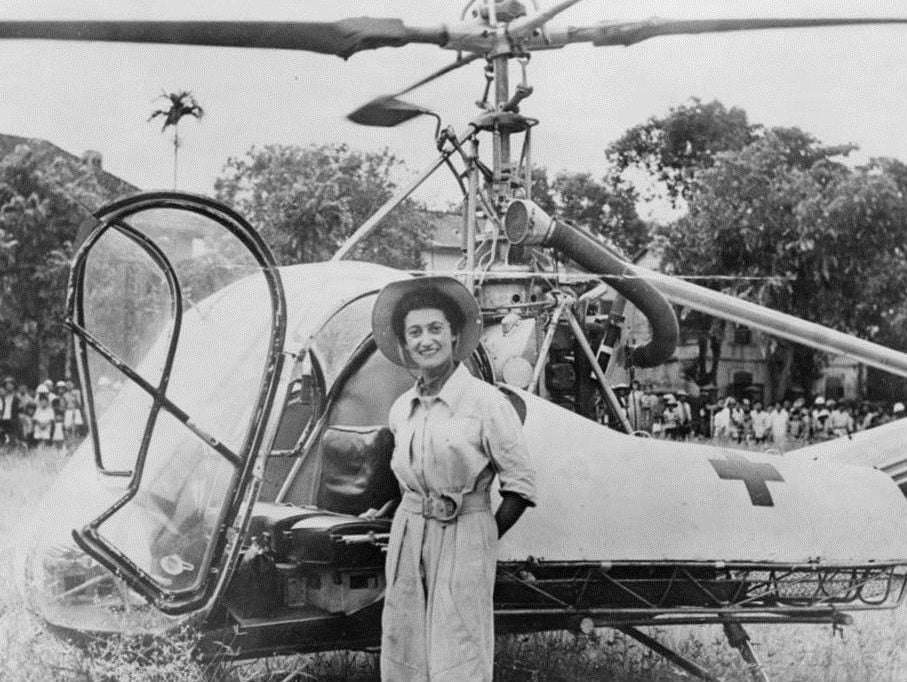Those familiar with Whirly-Girls, the international association of women helicopter pilots, may have noticed the name of Valérie André in its website’s historical section. Women in the French military — and probably elsewhere in the world — owe her a lot.
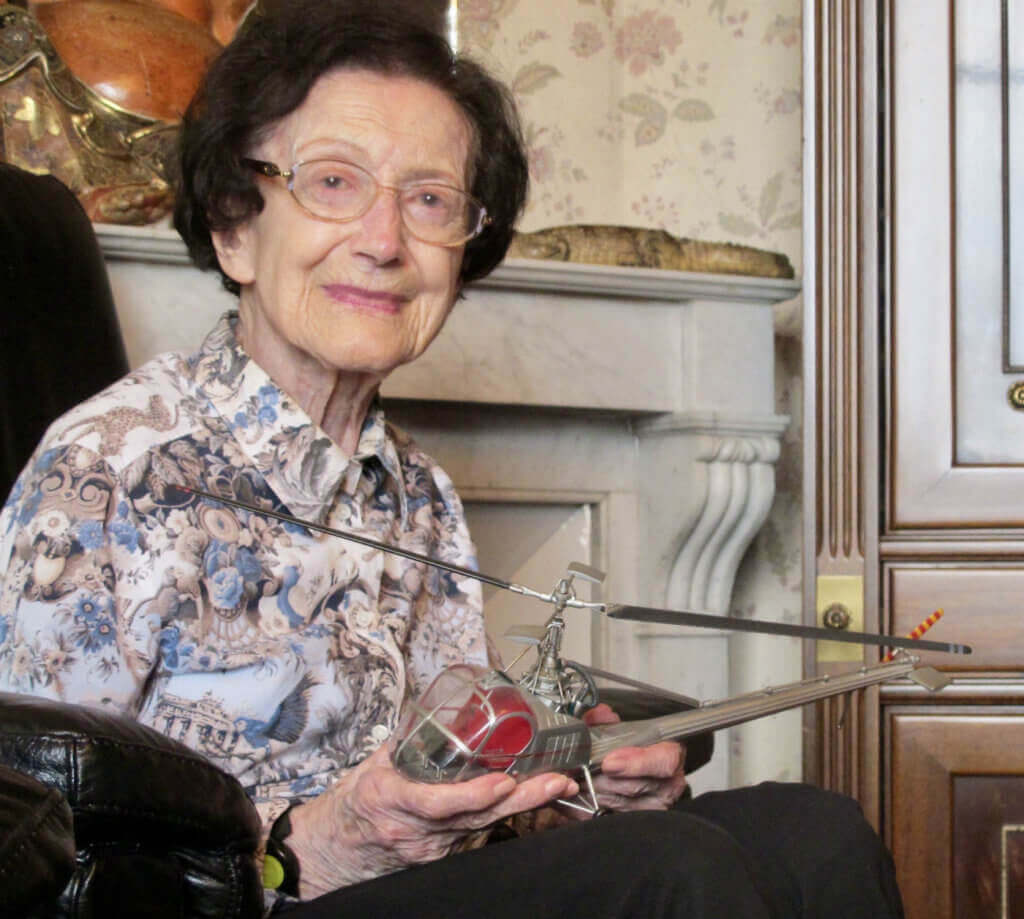
André pioneered the use of helicopters in medical evacuations and was the first woman to become a general officer in France. Now 95, she has a vivid memory of her key role in the First Indochina War in the early 1950s and unfaltering convictions about the place of women in the armed forces.
André has lived in Issy-les-Moulineaux, less than one mile from Paris heliport, since the 1950s. This proximity almost happened by accident, but the location of the apartment, on the top floor of a six-story building, did not. “I wanted a lot of sky,” she told Vertical during a recent visit. André’s passion for flying has spanned her entire life.
Before joining French forces, she logged a few hours in fixed-wing aircraft at a flying club. She also was a parachutist. “At the end of my medical studies, the dean of the faculty of medicine told us the military in Indochina did not have enough doctors; he suggested us to join the army under a fixed-term contract to see whether we liked it,” she recalled. She was taken with it.
She trained as a war surgeon, and as a parachutist, she was used in advanced surgical units. However, a helicopter demonstration in Saigon during the spring of 1950, changed her life. Two Hiller 360s were configured as air ambulances. She took a flight in one of the external stretchers.
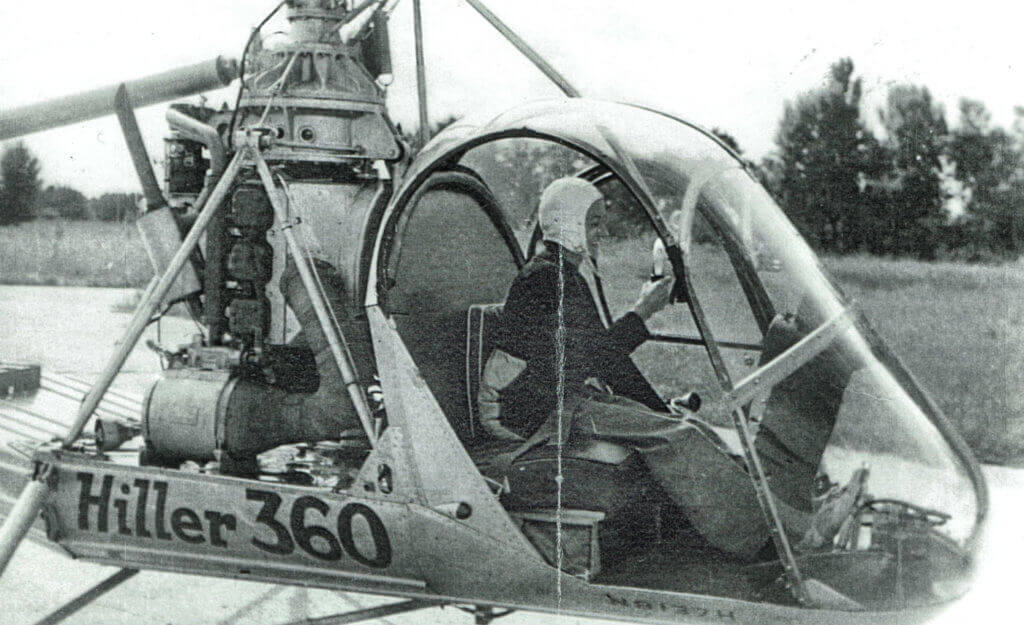
André was not the first to realize it would be better to go and fly the patient back, rather than being dropped with heavy equipment and a battalion for protection. But she strongly supported the idea and, as a surgeon, wanted to make the most of it. She wanted to become a helicopter pilot. “I besieged my superior,” she said.
The superior eventually sent her back to France, where a civil company, Helicop’Air, provided the training. Paradoxically, she never received a military pilot certificate during her career, yet logged over 4,000 hours in helicopters and flew almost 500 war missions. She was symbolically awarded certificate number 001 during a tribute ceremony in 2010.
André has a determined nature. In a book where she describes her experience between 1949 and 1953 during the First Indochina War, she does not sound impressed by fire; rather, she expresses sadness about all the destruction the conflict caused. However, she still thought of the warzone as a normal workplace for her.
As a pilot and surgeon, she would fly to an assigned combat area and, once there, triage casualties. Sometimes, she would do the surgery on site. In Indochina, she would heal both the French and the Vietnamese, she emphasized. The Hiller’s limited engine power sometimes presented a challenge. The engine’s 178 horsepower had to lift the aircraft, one pilot and one or two casualties. “We were happy when we had to carry skinny ones!” André said. Locals gave her nicknames. One was “The woman who comes down from the sky.” The other one was “Quekat” — Vietnamese for “Mrs. Ventilator.”
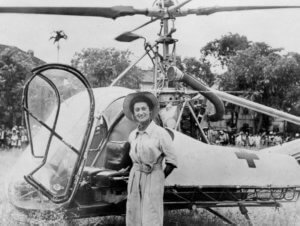
André also flew during the Algerian decolonization war. She was the head physician of a squadron of H-19s, H-34s, (both Sikorsky types), Alouettes and Alouette 2s. “In addition, I was a pilot in my own right,” she added. She was flying not only for medical evacuation purposes. There were assault missions, too, with eight or nine commandos — “all armed to the teeth.”
To manage such a career, André not only had the right stuff — she also was lucky, she admits. An engine failure in Indochina caused her helicopter to crash in a hostile area, but she escaped unharmed. During the same period, her weight — less than 100 pounds — allowed her to fly along with another officer before she could solo. She thus learned a lot, whereas a heavier person would not have been let in the Hiller. She later married the officer who trained her, Alexis Santini.
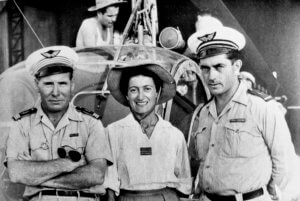
André had mixed feelings about the male environment. In her book, she tells about day-to-day camaraderie and this is still, today, the dominant memory for her. However, the book also described how the official organization tended to leave women behind. On a waiting list for helicopter training, she was behind other people simply because they were men. At another point, she heard that being a female parachutist was prejudicial to “men’s prestige.”
In 1976, French TV reported about her being the first female general officer in the country. In the report, the first comments were about the way she prepared meals. In 1981, then-defense minister Charles Hernu wrote to her. She was a general and close to the end of her career. Hernu offered her the opportunity to be chairperson of a commission created to study the future of the military woman. “I accepted, of course,” she says. There were 28 people in the commission, including members of the parliament and military.
“Our goals were to open all disciplines to women, ensure they could participate in leadership — which had not been the case so far, as they were confined to administrative tasks — and guarantee they could get promotion, on an equal basis with boys.” Meetings were sometimes stormy. But André believes the commission’s work was fruitful. “I wanted women to be real combatants, not just airclub pilots,” she recalled. However, at the time, she realized mentalities were not ready to accept female fighter pilots. Those opposing such progress were citing “ethical reasons,” a reaction that André now characterizes as “imbecilities of an earlier era.”
The final report made two kinds of propositions. Some would be for immediate application, some others for the longer term. “Now, everything is established,” André said, adding that she believes there is no longer a difference between women and men in France’s armed forces.
It was not easy but, to her contentment, “all the [trailblazing] girls were marvelous; they were very good. Should they have been not so good or not so motivated, we would have been heavily criticized.”
Among other decorations, Valérie André was awarded the U.S. Legion of Merit.





